Lindsay Townsend's Blog, page 20
January 21, 2013
The Romance of snow
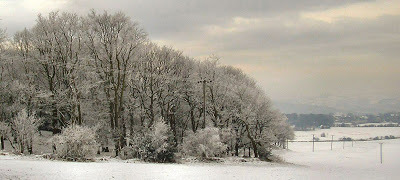
The romance of snow is a relatively recent idea. When the river Thames froze in the 'little ice age,' between the 15th and 19th centuries, people enjoyed great frost fairs on the river. Christmas was celebrated as the birth of Christ. Winter however was largely dreaded and endured, a time of little light, dwindling food, bad roads.
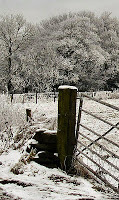 Nursery rhymes show us winter before the modern age:
Nursery rhymes show us winter before the modern age:Little Polly Flinders
Sat among the cinders,
Warming her pretty little toes.
Her mother came and caught her,
And whipped her little daughter
For spoiling her nice new clothes.
(Little Polly might also have suffered from chilblains by sitting with her feet so close to the fire.)
 Doctor Foster went to Gloucester
Doctor Foster went to Gloucester In a shower of rain,
He stepped in a puddle,
Right up to his middle,
And never went there again.
Roads could be very dangerous, especially in winter.
And what will poor robin do then, poor thing?
He'll sit in a barn and keep himself warm
and hide his head under his wing, poor thing.
 Before central heating, keeping warm was difficult for everyone in winter. Following on from a custom begun in Victorian times, I always feed the birds in winter.
Before central heating, keeping warm was difficult for everyone in winter. Following on from a custom begun in Victorian times, I always feed the birds in winter.Pease porridge hot!
Pease porridge cold!
Pease porridge in the pot
Nine days old.
Food in winter could be sparse, less than fresh and dull.
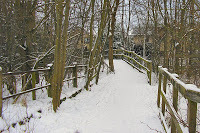 As living conditions improved, people began to enjoy winter. There is a pleasure in watching snow fall and in making snowmen, having snowball fights, going for snowy walks. I love the trees in winter, so sculptured and stark.
As living conditions improved, people began to enjoy winter. There is a pleasure in watching snow fall and in making snowmen, having snowball fights, going for snowy walks. I love the trees in winter, so sculptured and stark.I also enjoy setting romance stories in winter. The dark and cold of the season can give my hero and heroine something elemental to strive against. Their warning feelings for each other contrast with the bitter weather. And perhaps they can have a snowball fight...
Please see my 'The Snow Bride,' 'Twelve Kisses,' 'A Knight's Captive,' and 'Flavia's Secret,' for more.
Published on January 21, 2013 05:22
December 8, 2012
Romances for Christmas
Quite a few of my romances take place at Christmas-time, or over the Yule-time period. Why is that? Because Christmas is a time for families, for gifts, for beginnings, for magic. Here are my Romances at Christmas.
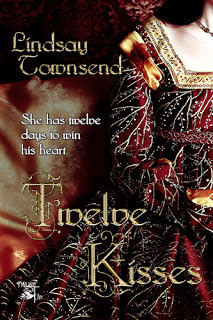 'Twelve Kisses' is my latest story set at Christmas-time itself. I wanted it to be a story of love and hope, of a young couple finding each other again and reuniting in love. It's set a little later than my other medieval romances, just at the start of the Tudor period. Due out from Muse it Up Publishing on December 14th.
'Twelve Kisses' is my latest story set at Christmas-time itself. I wanted it to be a story of love and hope, of a young couple finding each other again and reuniting in love. It's set a little later than my other medieval romances, just at the start of the Tudor period. Due out from Muse it Up Publishing on December 14th.
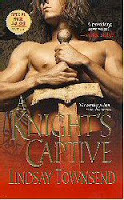 'A Knight's Captive,' my 1066 historical romance, has its climax and ending at Christmas. We go with Sunniva and Marc to witness the crowning of William of Normandy and we see what happens later, when Sunniva returns with Marc, her new Norman lord, to her old Saxon homelands.
'A Knight's Captive,' my 1066 historical romance, has its climax and ending at Christmas. We go with Sunniva and Marc to witness the crowning of William of Normandy and we see what happens later, when Sunniva returns with Marc, her new Norman lord, to her old Saxon homelands.
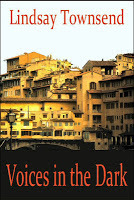 My modern romantic suspense, 'Voices in the Dark,' has many Christmas scenes and settings, including Venice in winter.
My modern romantic suspense, 'Voices in the Dark,' has many Christmas scenes and settings, including Venice in winter.
 'The Snow Bride' is another historical romance. Christmas is fast approaching in this medieval tale of stolen brides and romance. Magnus and Elfrida must find them before the winter Solstice, the darkest time of the year.
'The Snow Bride' is another historical romance. Christmas is fast approaching in this medieval tale of stolen brides and romance. Magnus and Elfrida must find them before the winter Solstice, the darkest time of the year.
 If you fancy an 'older' kind of Christmas and Christmas celebrations, have a look at my 'Flavia's Secret'. This historical romance and mystery also has a climax during the ancient Roman Saturnalia - their pagan version of our Christmas.
If you fancy an 'older' kind of Christmas and Christmas celebrations, have a look at my 'Flavia's Secret'. This historical romance and mystery also has a climax during the ancient Roman Saturnalia - their pagan version of our Christmas.
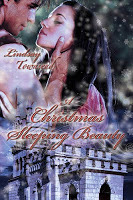 I wrote my 'A Christmas Sleeping Beauty,' as a fairy tale at Christmas. What will Prince Orlando have to do and learn to wake and win his sleeping princess?
I wrote my 'A Christmas Sleeping Beauty,' as a fairy tale at Christmas. What will Prince Orlando have to do and learn to wake and win his sleeping princess?
You can learn more and read first chapters and reviews by clicking on the covers on the sidebar of this blog. That will take you to the book pages for each story. Links to my books at bookstores are also on the sidebar.
Happy Reading!

 'Twelve Kisses' is my latest story set at Christmas-time itself. I wanted it to be a story of love and hope, of a young couple finding each other again and reuniting in love. It's set a little later than my other medieval romances, just at the start of the Tudor period. Due out from Muse it Up Publishing on December 14th.
'Twelve Kisses' is my latest story set at Christmas-time itself. I wanted it to be a story of love and hope, of a young couple finding each other again and reuniting in love. It's set a little later than my other medieval romances, just at the start of the Tudor period. Due out from Muse it Up Publishing on December 14th. 'A Knight's Captive,' my 1066 historical romance, has its climax and ending at Christmas. We go with Sunniva and Marc to witness the crowning of William of Normandy and we see what happens later, when Sunniva returns with Marc, her new Norman lord, to her old Saxon homelands.
'A Knight's Captive,' my 1066 historical romance, has its climax and ending at Christmas. We go with Sunniva and Marc to witness the crowning of William of Normandy and we see what happens later, when Sunniva returns with Marc, her new Norman lord, to her old Saxon homelands. My modern romantic suspense, 'Voices in the Dark,' has many Christmas scenes and settings, including Venice in winter.
My modern romantic suspense, 'Voices in the Dark,' has many Christmas scenes and settings, including Venice in winter. 'The Snow Bride' is another historical romance. Christmas is fast approaching in this medieval tale of stolen brides and romance. Magnus and Elfrida must find them before the winter Solstice, the darkest time of the year.
'The Snow Bride' is another historical romance. Christmas is fast approaching in this medieval tale of stolen brides and romance. Magnus and Elfrida must find them before the winter Solstice, the darkest time of the year. If you fancy an 'older' kind of Christmas and Christmas celebrations, have a look at my 'Flavia's Secret'. This historical romance and mystery also has a climax during the ancient Roman Saturnalia - their pagan version of our Christmas.
If you fancy an 'older' kind of Christmas and Christmas celebrations, have a look at my 'Flavia's Secret'. This historical romance and mystery also has a climax during the ancient Roman Saturnalia - their pagan version of our Christmas. I wrote my 'A Christmas Sleeping Beauty,' as a fairy tale at Christmas. What will Prince Orlando have to do and learn to wake and win his sleeping princess?
I wrote my 'A Christmas Sleeping Beauty,' as a fairy tale at Christmas. What will Prince Orlando have to do and learn to wake and win his sleeping princess?You can learn more and read first chapters and reviews by clicking on the covers on the sidebar of this blog. That will take you to the book pages for each story. Links to my books at bookstores are also on the sidebar.
Happy Reading!
Published on December 08, 2012 03:13
December 4, 2012
Rites of Winter - the Medieval Christmas
Make we mery, both more and lasse,
For now ys the tyme of Chrystymas
(From a 15th century carol)
When Christianity developed in the ancient Roman world, the winter solstice was already marked at 25th December. Followers of Mithras believed in the ‘unconquered sun’ and also held a feast-day for the sun on December 25th.
 The gospels did not give a date for the birth of Jesus, but ancient beliefs in the Roman Saturnalia, the solstice and sun-worship led to the church choosing December 25th as the time of his nativity.
The gospels did not give a date for the birth of Jesus, but ancient beliefs in the Roman Saturnalia, the solstice and sun-worship led to the church choosing December 25th as the time of his nativity.
‘Christmas’ means ‘Christ’s Mass.’ In England in the Middle Ages three masses were celebrated on December 25th - the Angel’s Mass at Midnight, the Shepherds’ Mass at dawn and the Mass of the Divine Word during the day.
Before the three masses of Christmas there was the forty days of Advent. Advent was similar to Lent, a time of spiritual reflection and preparation for the coming of Christ. Feasting and certain foods such as meat and wine were meant for be abstained from during advent (something the evil Denzils ignore in my historical romance, The Snow Bride , set at this time).
The feasting and revelling time of medieval Christmas began on Christmas Eve and lasted 12 days, ending on Twelfth Night. There was no work done during this time and everyone celebrated. Holly, ivy, mistletoe and other midwinter greens were cut and brought into cottages and castles, to decorate and to add cheer.
The most important element of the revels was the feast. Christmas feasts could be massive – Edward IV hosted one at Christmas in 1482 when he fed and entertained over two thousand people. For rich medieval people there was venison or the Yule boar, a real one, and for poorer folk a pie shaped like a boar, or a pie made from the kidney, liver, and other portions of the deer (the umbles) that the nobles did not want – to make a portion of ‘umble pie'. Carefully hoarded items were also brought out and eaten and other special Christmas foods made and devoured. Mince pies were made with shredded meat and many spices. ‘Frumenty,’ a kind of porridge with added eggs, spices and dried fruit, was served. A special strong Christmas beer was usually brewed to wash all this down, traditionally accompanied with a greeting of 'wes heil' ('be healthy'), to which the proper reply was 'drinc heil'.
There were also other entertainments apart from eating and drinking – singing, playing the lute or harp, playing chess, cards or backgammon and carol dancing.
Presents and gift giving was originally not part of Christmas but of New Year. Romans gave gifts to each other at Kalends (New Year) as well as a week earlier at Saturnalia, and by the twelfth century it seems that children were already receiving gifts to celebrate the day of their protecting saint, St. Nicholas, and the practice soon began to extend to adults as well, initially as charity for the poor. As the Middle Ages wore on, the custom grew of workers on medieval estates giving gifts of produce to the estate owner during the twelve days of Christmas - and in return their lord would put on all those festivities.
Wes heil!

For now ys the tyme of Chrystymas
(From a 15th century carol)
When Christianity developed in the ancient Roman world, the winter solstice was already marked at 25th December. Followers of Mithras believed in the ‘unconquered sun’ and also held a feast-day for the sun on December 25th.
 The gospels did not give a date for the birth of Jesus, but ancient beliefs in the Roman Saturnalia, the solstice and sun-worship led to the church choosing December 25th as the time of his nativity.
The gospels did not give a date for the birth of Jesus, but ancient beliefs in the Roman Saturnalia, the solstice and sun-worship led to the church choosing December 25th as the time of his nativity.‘Christmas’ means ‘Christ’s Mass.’ In England in the Middle Ages three masses were celebrated on December 25th - the Angel’s Mass at Midnight, the Shepherds’ Mass at dawn and the Mass of the Divine Word during the day.
Before the three masses of Christmas there was the forty days of Advent. Advent was similar to Lent, a time of spiritual reflection and preparation for the coming of Christ. Feasting and certain foods such as meat and wine were meant for be abstained from during advent (something the evil Denzils ignore in my historical romance, The Snow Bride , set at this time).
The feasting and revelling time of medieval Christmas began on Christmas Eve and lasted 12 days, ending on Twelfth Night. There was no work done during this time and everyone celebrated. Holly, ivy, mistletoe and other midwinter greens were cut and brought into cottages and castles, to decorate and to add cheer.
The most important element of the revels was the feast. Christmas feasts could be massive – Edward IV hosted one at Christmas in 1482 when he fed and entertained over two thousand people. For rich medieval people there was venison or the Yule boar, a real one, and for poorer folk a pie shaped like a boar, or a pie made from the kidney, liver, and other portions of the deer (the umbles) that the nobles did not want – to make a portion of ‘umble pie'. Carefully hoarded items were also brought out and eaten and other special Christmas foods made and devoured. Mince pies were made with shredded meat and many spices. ‘Frumenty,’ a kind of porridge with added eggs, spices and dried fruit, was served. A special strong Christmas beer was usually brewed to wash all this down, traditionally accompanied with a greeting of 'wes heil' ('be healthy'), to which the proper reply was 'drinc heil'.
There were also other entertainments apart from eating and drinking – singing, playing the lute or harp, playing chess, cards or backgammon and carol dancing.
Presents and gift giving was originally not part of Christmas but of New Year. Romans gave gifts to each other at Kalends (New Year) as well as a week earlier at Saturnalia, and by the twelfth century it seems that children were already receiving gifts to celebrate the day of their protecting saint, St. Nicholas, and the practice soon began to extend to adults as well, initially as charity for the poor. As the Middle Ages wore on, the custom grew of workers on medieval estates giving gifts of produce to the estate owner during the twelve days of Christmas - and in return their lord would put on all those festivities.
Wes heil!
Published on December 04, 2012 07:11
November 19, 2012
More Historical Romances at Bookstrand

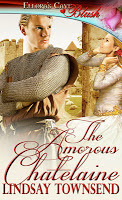
 My medieval romance novel 'A Knight's Vow,' plus my medieval romance novellas 'The Lord and Eleanor' and 'The Amorous Chatelaine,' are for sale at Bookstrand on my author page.
My medieval romance novel 'A Knight's Vow,' plus my medieval romance novellas 'The Lord and Eleanor' and 'The Amorous Chatelaine,' are for sale at Bookstrand on my author page.
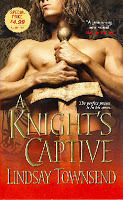 These fit nicely with my other historical romances already for sale at Bookstrand - 'A Knight's Captive,' 'The Snow Bride,' 'A Knight's Enchantment,' 'Midsummer Maid,' and 'A Christmas Sleeping Beauty'.
These fit nicely with my other historical romances already for sale at Bookstrand - 'A Knight's Captive,' 'The Snow Bride,' 'A Knight's Enchantment,' 'Midsummer Maid,' and 'A Christmas Sleeping Beauty'.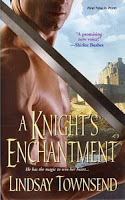
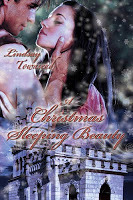
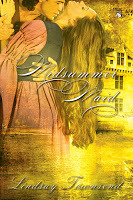
Published on November 19, 2012 03:13
October 22, 2012
Medieval peasants tuck in: feasting at Christmas and Easter
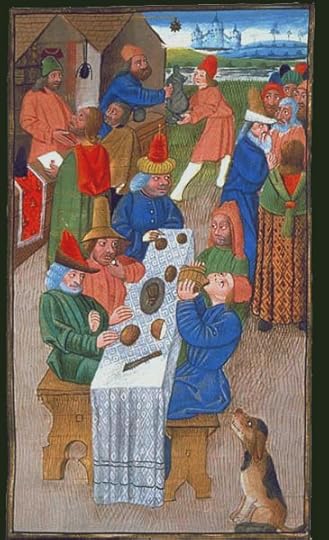 Feasting for a noble or a king in the medieval period could be a splendid, lengthy, expensive affair, where dishes were produced and shown to display wealth and power. What about feasts for the bulk of the population who lived on the land?
Feasting for a noble or a king in the medieval period could be a splendid, lengthy, expensive affair, where dishes were produced and shown to display wealth and power. What about feasts for the bulk of the population who lived on the land?In an age without freezers and only limited storage methods – smoking, salting, drying, preserving, keeping – all foodstuffs had to be produced in time to the rhythms of the farming year. In the Middle Ages, that meant the Christian calendar. Feasts were allied to the high points of harvests, saints’ days, Christ’s life, the change of the seasons and the winter and summer solstices.
Christmas especially, covering the darkest time of the year and preceded by the fast of Advent, was celebrated for almost two weeks by all classes. No work was done in that ‘quiet’ season of the farming year and people celebrated by dancing, singing, story-telling, drinking and eating.
In the countryside, some lucky peasants might be fed within their lords’ manor houses over Christmas as part of the Christian tradition of charity and share in rich dishes and strong beers. Other peasants would feast at home. Meat, as a luxury, would certainly be enjoyed, usually in the form of bacon, salted beef or mutton. Such cuts would be made into stews or slow roasted. Pepper was used as a spice by all classes and at Christmas carefully hoarded spices such as ginger, some dried herbs from the kitchen garden and perhaps even exotic fruits such as dried raisins might be added to the stews to add different flavours. We know that peasants had access to exotic spices and dried fruits because the Sumptuary Laws forbade indulgence in both rich clothes and expensive foods by the ‘lower’ classes.
Fine wheat bread, if peasants could produce it (by grinding the flour in secret away from their lords’ mill) would be a treat. River fish or eels would make a change from the usual salted dried cod of winter-time. Waterfowl, chickens, and – once they had escaped and bred from their specially constructed warrens – rabbits, could be caught, roasted or turned into stews and pies.
Hard cheese, which would keep through the winter, might have been part of a peasant’s Christmas feasting and certainly there would have been pottages, vegetable one pot stews made from the cut and come again greens and root vegetables (not potatoes yet) from the kitchen garden.
 As well as food treats, peasant households would decorate their homes for their Christmas feasts. Holly, ivy and mistletoe were cut and brought indoors to make the Christmas Bush that hung from the rafters. And after Christmas there was the festival of wassailing in cider apple districts. People would gather in the orchards and light fires under the trees, dance round them and drink to them.
As well as food treats, peasant households would decorate their homes for their Christmas feasts. Holly, ivy and mistletoe were cut and brought indoors to make the Christmas Bush that hung from the rafters. And after Christmas there was the festival of wassailing in cider apple districts. People would gather in the orchards and light fires under the trees, dance round them and drink to them.The lengthening days of early spring were often times of sparse commons for everyone as winter stores were eaten and the new crops and growth were still not ready. The hard fasting of Lent, and before that the feast of Shrovetide when all the dairy food ‘luxuries’ not allowed during the fasting time were used up, gave way at last to Easter.
Richer peasants might feast on lamb or suckling pig, served with the first spring greens. Eggs featured heavily since they symbolised the stone rolled away from the tomb of Christ. Pace or paschal eggs, coloured with onion skins and wine, were part of the Easter feast, which, like Christmas, could last over several days.
(Pictures from Wikimedia Commons.)
Published on October 22, 2012 07:51
September 20, 2012
Single Titles gives The Amorous Chatelaine 5 Stars
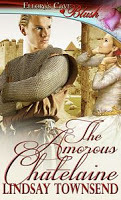 Candy at Single Titles has given my medieval historical romance, 'The Amorous Chatelaine' a 5 Stars review.
Candy at Single Titles has given my medieval historical romance, 'The Amorous Chatelaine' a 5 Stars review.Single Titles:
 Lindsay Townsend gives the reader a sweet love story about a woman who thinks her love life is over and the man who rekindles her passion. Emma lives happily with her warrior women, spending her time improving the lives of young knights. She does not realize that something is missing from her own life until she meets Sir Robert. He challenges her and makes her look forward to each new experience. When someone tries to take away everything she worked so hard to build, Sir Robert is at her side willing to fight for her. Is Sir Robert the man who will make Lady Emma live again? Five Stars.
Lindsay Townsend gives the reader a sweet love story about a woman who thinks her love life is over and the man who rekindles her passion. Emma lives happily with her warrior women, spending her time improving the lives of young knights. She does not realize that something is missing from her own life until she meets Sir Robert. He challenges her and makes her look forward to each new experience. When someone tries to take away everything she worked so hard to build, Sir Robert is at her side willing to fight for her. Is Sir Robert the man who will make Lady Emma live again? Five Stars.
Published on September 20, 2012 01:59
September 18, 2012
Medieval Bath - my setting for 'An Older Evil'
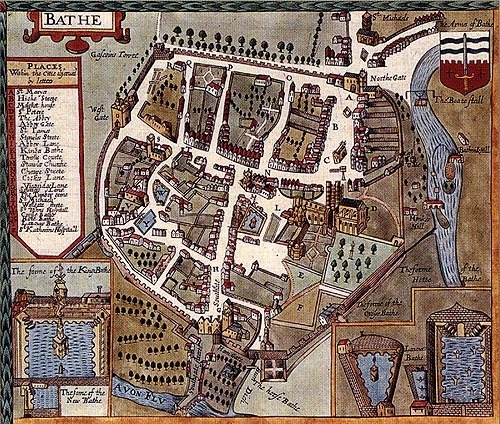 The city of Bath in Somerset, south west England is a world heritage site, famous for its Roman baths and its Regency architecture. I drew on the Roman city of Aquae Sulis and its baths for my historical romance
Flavia’s Secret
. There is also a hidden city at Bath, the medieval city, parts of which remain even after much has been built over, adapted, added to or superseded by the Regency makeover the city underwent in the eighteenth century. We can see the medieval city in John Speed’s 1610 map of Bath. It’s small and walled, with towers and gates. The thermal baths are there, and there are orchards, churches and hospitals. The Abbey is also shown, smaller than in the early Middle Ages when it was extensively added to by Bishop John, who wished to make Bath the seat of his bishopric. This Abbey church was wrecked by fire in 1137 and the whole monastery complex declined, especially after the Black Death in 1439. Later, the rebuilt church occupied only the nave-space of the former Norman cathedral.
The city of Bath in Somerset, south west England is a world heritage site, famous for its Roman baths and its Regency architecture. I drew on the Roman city of Aquae Sulis and its baths for my historical romance
Flavia’s Secret
. There is also a hidden city at Bath, the medieval city, parts of which remain even after much has been built over, adapted, added to or superseded by the Regency makeover the city underwent in the eighteenth century. We can see the medieval city in John Speed’s 1610 map of Bath. It’s small and walled, with towers and gates. The thermal baths are there, and there are orchards, churches and hospitals. The Abbey is also shown, smaller than in the early Middle Ages when it was extensively added to by Bishop John, who wished to make Bath the seat of his bishopric. This Abbey church was wrecked by fire in 1137 and the whole monastery complex declined, especially after the Black Death in 1439. Later, the rebuilt church occupied only the nave-space of the former Norman cathedral.
 Other medieval buildings of Bath, such as St Catherine’s hospital on Bilbury Lane, the church of St Mary of Stalls and Alsi’s bath have long disappeared, their foundations hidden beneath the later expansion of the city. However aspects of medieval Bath do survive. A section of city walls still stands in Upper Borough and is now protected. Part of one of the ancient gates, the East Gate, remains, close to Robert Adam’s Pulteney Bridge. Many of the Georgian-fronted buildings turn out to have hidden medieval timber frames and structures behind the palladian facades, such as was discovered behind the front of 21-22 High Street. There are medieval cellars, too, such as one in Abbey Church House. The ancient healing place of the Hospital of St John the Baptist, ‘the hospital of the baths’ still partly fulfils its original medieval function.
Other medieval buildings of Bath, such as St Catherine’s hospital on Bilbury Lane, the church of St Mary of Stalls and Alsi’s bath have long disappeared, their foundations hidden beneath the later expansion of the city. However aspects of medieval Bath do survive. A section of city walls still stands in Upper Borough and is now protected. Part of one of the ancient gates, the East Gate, remains, close to Robert Adam’s Pulteney Bridge. Many of the Georgian-fronted buildings turn out to have hidden medieval timber frames and structures behind the palladian facades, such as was discovered behind the front of 21-22 High Street. There are medieval cellars, too, such as one in Abbey Church House. The ancient healing place of the Hospital of St John the Baptist, ‘the hospital of the baths’ still partly fulfils its original medieval function.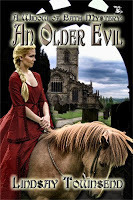 I have recreated the medieval city and its baths in my recently published historical mystery, An Older Evil, the first of a series featuring Alyson, a widow of Bath.
I have recreated the medieval city and its baths in my recently published historical mystery, An Older Evil, the first of a series featuring Alyson, a widow of Bath.
Published on September 18, 2012 01:52
September 7, 2012
Return to mystery - 'An Older Evil' published today
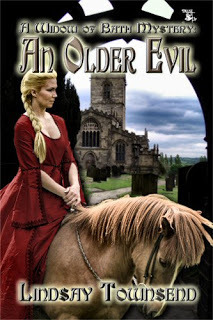 When I first started writing for publication, I wrote in one of my favourite genres, historical romance. Since then I have also written both romantic suspense and historical mystery, and the three genres have the following in common for me:
When I first started writing for publication, I wrote in one of my favourite genres, historical romance. Since then I have also written both romantic suspense and historical mystery, and the three genres have the following in common for me:High stakes
Adventure
A ticking clock
A heroine under pressure who responds
A protective hero
A setting that has an impact on the characters.
With my most recent novel, I have returned to the Middle Ages and to Historical Mystery. An Older Evil - published today - is the first of a series of stories featuring the heroine Alyson Weaver. Alyson is older than my romance heroines and experienced in life and love, a widow of Bath who loves life and who hates injustice. In the times when she lived there was no formal police force, so when a stranger is murdered close to her home, Alyson feels compelled to investigate, especially when her family and household come under threat.
Alyson is also happy to play Cupid whenever she can and there is a romantic subplot in this novel... an unusual romantic subplot.
MuseItUp Publishing, September 7, 2012
Buy the ebook now:
MuseItUp
Here is an excerpt:
April 25th, 1386.
Sweeping into her airy workshop, Alyson had no inkling of the murder she would witness outside Bath that morning. Head busy with accounts, forearms aching from her weaving, she ducked from her sunny, tidy buttery into the whitewashed old hall, bearing a huge red-glazed pitcher and cups. Slipping past her weaving frame under the big square window and the trestle loaded with carding boards and piles of freshly washed wool, she handed each of the maids who spun for her today a foaming beaker of ale.
Dropping their spindles onto the rush matting, all three set off for the open door. Clustered in the threshold, giggling and pointing with their tankards, Emily, Kate and Bela had time for nothing but the man working in the nearby meadow. “He’s an angel!” cried Bela, smacking her lips.
Laughing, Alyson filled two more cups and joined them at the back door. “That’ll be the new woodman Felise mentioned. Let’s welcome him, shall we? No, Bela.” She caught the youngest girl back. “I’d best go first. I need to warn your angel to keep to the path whilst he tends the abbey’s trees.” Threading between Kate and Emily, Alyson stepped down into the yard. “I’ll find out his name for you. You can take him bread and ale at noon. Just be sensible.”
Impossible advice. Aware of the excited whispering behind her, she struck out across the beaten earth yard, past the shadow of her new timbered hall, to where her plump laundress was doubled over a cauldron of hot water, scouring linen with a scrubbing board. After leaving the sweating Willelma her ale, Alyson dipped through the yard gate and trod amongst the damp meadow primroses, daisies, and fresh grass. Clambering the steep chalk track toward Beacon Hill, the spring sun warm on her strong, high-coloured face, she had a splendid view of the young man working in the ash copse at the far side of her small hillside meadow, his back to her as he sawed fallen branches.
Alyson stopped dead, her free hand making the sign of the cross. By the rood, he was like Jankin! Those crisp blond curls and long shapely legs made the woodman a mirror of her fifth and youngest husband. Jankin’s luminous eyes and teasing mouth had charmed her more than spiced wine, music, or dance. But Jankin was two years dead, murdered in a tavern brawl.
Suddenly, Alyson felt the weight of her forty-five years. She trembled, her breathing quickening, though not from the climb. Ahead, the woodman sawed on, the bite of metal on wood louder than the raucous twitter of nesting birds and the bawling of street vendors down below in nearby Bath. Waiting for her grief to subside, Alyson looked back, thinking of her home, lonely at the edge of meadows. She had fragile memories of running as a tiny child through that rectangular block of cramped kitchen, old hall, and little buttery, then up an outside stair to a small private chamber—Mother’s sun-room, called a solar.
Alyson sighed, conscious of a dropping chill in her belly although the day was bright. The old house fronted the road, its main windows and doors facing down into Bath. Her fourth husband, Peter, had demanded more privacy, and a second crook-gabled dwelling had been built on at right angles to the first, so now the house was an L-shaped block. Peter had approved the handsome brown and white cross-beamed timbered long hall. He had chosen the three lancet windows in the new hall with their top quatrefoils done in expensive glass—showy but cold. It had been Peter, too, who had determined where the hall dais should go and the hearth. Inside the house, there were many pieces of furniture and plate to be polished, for Peter had aspired to be a country worthy as well as a wool merchant.
Alyson was a city child. After the great pestilence of 1349 had carried off her parents from this country suburb, Alyson had been brought up inside Bath at her brother Adam’s house. Her daughter, Margery, and grandchild, Benedict, still lived within its lively streets. Her keen sight took in the small city, snug in its setting of limestone cliffs and wooded hills, the pale bulk of the abbey church and its grounds filling most of the city walls and dominating the narrow streets with their thatched houses and thermal baths, famous for cures throughout Christendom. Lucky Mag and Ben, to dwell so close to so much company and gossip! Yet Bath was where Peter’s long-term mistress lived, and Alyson would have walked farther than Jerusalem to avoid Isabel.
Catching a scent of cowslips on the breeze stirring the tips of her veil, she shaded her eyes. Beyond her field ran the London road, threading to the left past her church of St. Michael and into the north gate of the city. Where that road narrowed and became lined with tall, timber-framed houses, Felise Brewster lived, baker of the best date slices in Bath. She called in most days. Felise was sickly now and could no longer gad about. Recalling her friend’s listless limbs and stricken face, Alyson turned again, eager to be on her way.
The stranger must have heard the rustle of her skirts. Fast as a cleric’s angel dancing on a pinhead, he spun about, the saw raised like a club. Or a sword, ready to slash at an enemy, thought Alyson, hoisting her flagon. “Forgive me if I startled you. I’m your neighbour, Mistress Weaver. You’re working in my field.” Alyson blazed her engaging gap-toothed smile and held out the ale. “For you.”
The saw lowered, and a white hand removed the wooden beaker from her fingers. Crisp gold curls rolled forward as the young man nodded thanks, his dark eyes swarming over her shapely figure. He grinned, but Alyson was uneasy. Something was wrong here. “You’re here from the north?” she asked in Midlands speech.
No recognition. Alyson tried Cornish, Yorkshire, and Canterbury dialects, but the young man drank on with no more understanding than an ape. Pretty manners, though: when he’d finished he wiped his mouth with the back of his hand, not his sleeve. Such a patched, honest sleeve, thought Alyson. Tight round his arm, but with clothes being so often passed on in families, that wasn’t to be wondered at. His smooth new hose were a different matter.
“Your stockings are very fine,” she murmured in Latin.
The woodman glanced down the front of his short homespun tunic, and she seized the chance to walk on, leaving the flagon behind. Whatever was going on here, Felise was more important than this mystery.
* * * *
Trapped in her friend’s stifling back parlour before a spitting birch wood fire and nursing a goblet of mead, Alyson squirmed on the high-backed bench. Excessive heat always made her queasy, but Felise needed the warmth. “You are well today?” she asked, concerned.
“Not bad.” Felise stirred into her posset a spoonful of the herbs Alyson had brought. She tapped her goblet. “Thanks for these.”
Alyson dragged the vermilion veil off her head and raked hot fingers along one of her darkening blonde plaits. “It’s nothing.”
“You know that’s not true. Your mixtures always help, especially after the apothecary.”
Alyson scowled. “I trust you didn’t let him bleed you.” Felise, who was around the same age as her, was not strong and lost too much blood already through abnormal monthly courses.
“I told him no this time.”
Alyson looked up and saw the blush on her friend’s delicate oval face, the glint of fire in the wide black eyes. Delighted, she whistled at a pet finch chirruping in its wicker cage in one corner of the cosy room and squeezed the small hand lying on the bench next to hers. “Good!”
Starting to her feet, Alyson leaned round the yellow and blue striped wall hanging to peer through the half-opened shutters of the lancet window. “Your Gilbert must be pleased. Where is he this morning?”
Felise shrugged narrow shoulders. “Off somewhere as usual. Alyson, this strange young man you mentioned earlier—how did you guess it wasn’t the new woodman?”
“Because his clothes were wrong. The tunic he was wearing had been made for a shorter, leaner man, and it wasn’t a hand-me-down. Not with those fancy hose. And the abbey wouldn’t hire a forester round Bath who understood Latin but not a word of our dialect.” Alyson tutted. “This was a quick deception, for what reason I’ve no notion. The man’s a squire, still training in arms, or a clerk.” She nodded, long blonde and hazel plaits bobbing against her hips. “He didn’t come at me with that saw. Probably a clerk.”
“Like Jankin. Or your son, William, as he might have been,” Felise added.
“As you say.” Alyson slowly resumed her place on the wooden bench. Her eyes had begun to smart, maybe from the curling wisps of wood smoke.
The pet finch fell silent. In the small pause that followed, Alyson heard someone scream in the kitchen. A shower of crockery hit stone flags on the floor below theirs, and a pair of heels pounded off in the direction of the scullery. She started to her feet again, her tall figure protectively in front of Felise. “What’s happening?”
There were sounds of a scuffle, then a yell and a rush of savoury smells as the kitchen door slammed open and shut. A tumult of kitchen steam and bickering drifted up the steep staircase outside the parlour.
“What is it?” Alison asked.
“Oliver, raiding off the spits again.” Tiny Felise slumped on the bench, clutching a cushion. “Alyson, he’s dreadful! He was sent back to us last night. Gilbert had to pay the potter a fortune for his wicked damage.”
Alyson said nothing. Oliver would never have lasted as an apprentice potter. The boy was too full of energy to be penned indoors.
“What am I going to do with him?” Felise weakly pummelled her cushion. “He wrecks everything he touches! Gilbert complains he does nothing but stuff himself with food.”
“Ten-years-old is a starving time. I remember eating a whole loaf at the same age and being beaten for it.” Alyson set her empty goblet down into the hearth. “He’ll grow out of it.”
“Last night he set fire to his bedding!”
This was new, and worse, even for Oliver. Forcing an easy tone, Alyson remarked, “How many broken apprenticeships is it? Tailor, goldsmith, lantern-maker? He’s a bright child. Could you ask him what he wants to do?”
“We’re his parents. We know what’s best for our son.”
Glad to escape the fireside again, Alyson stepped over the sheepskin hearthrug and stalked to the casement, squinting through the shutters for the sight of a squat, barrel-chested, flame-haired boy, the youngest of Felise’s brood of nine and the quickest in legs and wit. She felt pity and sadness for her friend and sympathy for Oliver, having been a tearaway herself.
“Why not send the young scamp to me? I’ll make him my page. He can sweat over sheep shearing, use up some of that fire.” Gilbert might condemn her as a bad influence, but at Alyson’s house, Oliver would be settled close to his mother’s, and Alyson would allow him to visit home often.
Poor, blind Gilbert, for not seeing how his youngest cared! Nor noticing how Oliver blamed himself for his mother’s shattered health, being clever enough to know how much Felise had been worn down by childbirth.
Smarting at life’s injustice, Alyson banged open a shutter and hollered down at the seemingly deserted herb garden, “I see you, Oliver, lounging by the lavender. You come out of there before you trample everything!”
A stifled sigh from the bench had her turning swiftly to kneel by her friend. “Sorry, Felise, that was ill-mannered! I forget myself. It’s the influence of Mars: it makes me too impetuous.”
Felise clasped the pleading hands. “Alyson, dear, I would not have you different. As for my boy—” Her fine black eyes swelled with tears.
Alyson leaned closer. “What is it? Not Oliver; you know he’s a good lad.”
The dry hands tightened their grip. “Alyson…has Gilbert a mistress?”
“Never! He dotes on you.”
“He’s going on pilgrimage. To the new shrine of the Virgin at Walsingham. He’s never wanted to go before, and I’m too feeble to accompany him.”
“So you assume he’s taking along a substitute wife? On a holy journey?”
“I know what happens between men and women on pilgrimages. You told me!” Felise released her friend and took up the posset again. “Alyson, could you go along? You love to travel, and you’ve never been to Walsingham. You could keep an eye on Gilbert for me.” She coughed dryly, clutching her chest, but smiling all the same. “You might even find yourself another husband!”
Alyson could still not believe it. “Tell me why you believe Gilbert’s unfaithful. Spare me no details!” The mystery of the false woodman she dismissed completely from her mind.
* * * *
The angelus was ringing all over Bath when Alyson left the smoky thatched house in Walcot Street. Nothing had been settled; not Oliver’s present place, nor Gilbert’s possible infidelity. Felise had certain pointers. Gilbert bathing regularly in the healing spring of the King’s Bath while not complaining of being ill. Gilbert bringing home a mirror one day and keeping it for his own use. Yet he showed no lessening in affection to his wife, so Alyson smiled comfortingly and said Felise must be mistaken.
But Felise had begged again for Alyson to go to Walsingham. A group of pilgrims were due to set out from Bath in five days’ time, Gilbert included, and Alyson promised to consider joining them.
Relieved to be out of doors after the baking heat of an invalid’s chamber, she strode out, swinging her aching arms, head up as she attacked the steeply rising path through the meadow. She wanted to be home before St. Michael’s noon bell sounded, and Bela hustled her more timid companions up the hill with the stranger’s food. A man in disguise might not be a threat to her girls, but it was best she be wary.
Ahead of her the squire-forester sawed slowly, clearly unused to the work. Puzzling again as to why he was doing it, Alyson called out, “Good morning!”
He stopped sawing, turned, and stared through her, not at her. He shouted something, words drowned by the noon bell, and Alyson jerked her head round, wondering what he had seen.
There was nothing below her but the nodding yellow cowslips of the meadow, the gate into Felise’s garden, and beyond that, the ochre dust of the London road and shimmer of distant houses. Disappointed, Alyson turned again, wondering what might have startled the youth into breaking his silence.
She saw him stagger and fall, try to crawl toward her, then slump face down into the grass. Alyson shouted and ran to him, but she was already too late. The sleek young body, curled over as though in sleep, was still and breathless, the golden curls dimmed by dust and blood. The stone that had shattered his skull had smashed open his right eye; he was beautiful no longer. He was dead.
Published on September 07, 2012 00:00
August 10, 2012
New Medieval Historical Romance - 'The Amorous Chatelaine'
 My latest Ellora's Cave mainstream Blush medieval historical romance, The Amorous Chatelaine, can now be pre-ordered at Ellora's Cave. You can read the blurb and an excerpt here
My latest Ellora's Cave mainstream Blush medieval historical romance, The Amorous Chatelaine, can now be pre-ordered at Ellora's Cave. You can read the blurb and an excerpt hereThis is my second Blush medieval historical romance with Ellora's Cave. My first, The Lord and Eleanor, is out at Amazon, Barnes and Noble, Ellora's Cave and many other sellers.
Published on August 10, 2012 10:40
June 29, 2012
'Midsummer Maid' - out today
 My sweet historical romance novella
Midsummer Maid
is out today. If you liked my
The Lord and Eleanor
, this is for you and you can buy it here:
My sweet historical romance novella
Midsummer Maid
is out today. If you liked my
The Lord and Eleanor
, this is for you and you can buy it here: MuseItUp
Amazon US
 Amazon UKBookstrand
Amazon UKBookstrandHere's the blurb:. Together, can their love defy the world? At Midsummer all things are possible…
He was a good man but cursed with the mark of the devil on his face and shunned by many. She was a dairy-maid, caring and brave, who feared no one.
Drawn to each other on a long and fateful Midsummer Day, can Haakon and Clare overcome the superstitions of their village and the brutal, lecherous knights to break out of their bonds of class and custom and to strive for a better life – together?
..and an excerpt:
Haakon was a woodsman, a forester. He had cared for his parents until they had both died last winter and then given away his younger sister at her wedding this spring. He was lonely in his simple hovel, but not unhappy, because Clare had returned to the village.
"Clare," Haakon said aloud, for the pleasure of speaking her name. "Clare."
Clare was the daughter of Agnes, the wet-nurse, sent back from the castle this summer by the lord's new lady, who disliked well-favored girls. With glowing brown hair and hazel eyes, Clare seemed an unlikely dairy maid, being so small and slender, but the beasts were docile with her. Who would not be, when tended by such nimble, smooth hands?
Haakon smiled and shook his head and returned to his sawing, working surely amidst the coppiced ash boles. Clare was a sweet wonder, with a ready smile and an easy laugh, even for him, but he had no illusions. He had work and a good, solid house, but she would never marry him. He had the mark of the devil on his face, a red stain stretching over half his chin. Even his beard did not cover it, for he was fair, with face hair as fine as a baby's fuzz. He went about clean-shaven now, ignoring the stares.
Clare had not stared, nor made the sign of the cross against him. Driving a cow along the track running close to the woodland, she would nod to him and raise a hand in greeting. She did this each time he met her, and he took care that they met every day.
Today he had not seen her, but reminded himself that he would not until later. He worked early, to finish this task, although it was the eve of a holy day when by custom there should be no work. The lord had wanted fresh ash poles for a bower at the castle bailey. Haakon had warned that the tree might sicken through being cut so late, but the lord had brushed the matter aside. His lady wanted a bower, filled with flowers and arched over with honeysuckle, and she would have it.
Haakon stopped to rest his aching back and straightened, raising his saw above his head as he stretched and cracked his shoulders. He disliked the lord's new lady, although he had never seen her. She had brought new things to the castle and new people, amongst them a rowdy younger brother, Edwin, a squire, who bullied all those smaller and weaker than himself. Still, he could not despise completely the lady who had returned Clare to the village.
He heard a blackbird give its alarm at the edge of the wood and knew the castle steward and his men approached.
"Soon be done," he told himself, sawing anew, "then it is a dip in the stream for me and a climb to the bonfire field.
Clare might be there already, garlanded with flowers. He thought it only right that she had been chosen as the June Lady of the village, for she was as bonny as a rose.
She will speak to me and smile, and the day will be bright. He grinned, hauling the cut poles to the waiting steward.
Published on June 29, 2012 06:20



